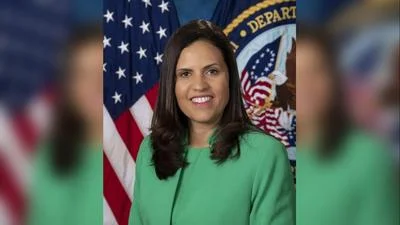Roger Eddy, Board Member | Olney Central College
Roger Eddy, Board Member | Olney Central College
Illinois State Board of Education, Teacher Performance Assessment Task Force met June 4.
Here are the minutes provided by the task force:
I. Call to Order/Roll Call:
Dr. Jason Helfer called the meeting to order at 3:31 p.m. and asked meeting facilitator Delaney Workman to conduct a roll call. A quorum was present.
Members Present:
Senator Tom Bennett
Elizabeth Dampf
Dr. Vito Dipinto
Dr. Marie Donovan
Shauna Ejeh
Representative Amy Elik
Dr. Andrea Evans
Shannon Fehrholz
Lori Grant
Gloria Helin
Dr. Terry Husband
Dr. Lori James-Gross
Dr. Christie McIntyre
Erika Mendez
Jessica Nunez
Jennifer Smith
Dr. Michelle Stacy
Robin Steans
Kesa Thurman-Stovall
Dr. Diana Zaleski
Ex-officio member appointed by the state superintendent of education: Dr. Jason Helfer
Members Absent:
Dr. John Burkey
Dr. Kathryn Chval
Jessica Handy
Katrina Hankison
Bob Langman
Senator Laura Murphy
Dr. Abir Othman
Claire Siejka
Representative Katie Stuart
Dr. Mary Ticknor
Others Present:
Meeting facilitator: Delaney Workman
Leslie Ellis
Emily Fox
Daryl Fridley
Jen Kirmes
Jim O’Connor
Jennifer Olson
Julie Peters
Omar Salem
Mercedes Wentworth-Nice
Michelle Westerhoff
II. Approval of Minutes
Dr. Helfer informed the members that there would not be a set of minutes to be approved today. Instead, members can approve the minutes during the meeting on June 18.
III. Public Comment
Dr. Helfer called for any public comment. No members of the public provided commentary, but Dr. Helfer thanked Ms. Fehrholz, regional superintendent of Regional Office of Education (ROE) 51, for the work done to secure a work permit for his son. He shared that the process was quick and painless and that he appreciated the work done by the individuals at ROE 51.
IV. New Business
Dr. Helfer moved on to new business and reminded the members of the discussion during the previous meeting. The main question that was raised then was, “What do we want to know?” He also shared that he is still in discussions with other states to invite representatives to speak at upcoming task force meetings. He then transitioned to introducing Daryl Fridley, the guest speaker for today.
Mr. Fridley, coordinator of Educator Preparation at the Missouri Department of Elementary and Secondary Education (MODESE), began by introducing himself and providing a brief overview of the Missouri Educator Evaluation System (MEES). He shared that Missouri piloted the edTPA but then transitioned to the Missouri Pre-Service Teacher Assessment (MOPTA), which was created in collaboration with the Educational Testing Service, as the state developed its own Praxis Performance Assessment for Teachers (PPAT). He explained the issues with the various assessments, such as difficulty uploading videos. Another concern shared was that the cooperating teachers who had student teachers and had to complete these assessments felt that this was an addition to their already overwhelming workload of having a student teacher. They explained that much of the time that should be spent working with the candidate to hone their skills was now being spent to help them pass the assessment.
As a result, Mr. Fridley shared that the student teaching evaluation created by MODESE, in conjunction with stakeholders, was being broadened and made more robust to replace the TPA. He went into further detail about this, explaining the process in which it was created. There was a content validation survey created to ensure that the evaluation measured what it intended to. The evaluation also is aligned to state-approved standards for teachers, counselors, and education leaders. MODESE did not feel that the value of a third-party assessment, such as edTPA and PPAT, was worth the additional cost to the teacher candidate.
Mr. Fridley responded to a question from a member: Is there a minimum score? He shared that yes, there is a minimum score, and it is reviewed by the MODESE. He explained that there is an awareness of the challenges of it being an internal assessment. Recently, the structure of the TPA was revised to have more of the scoring fields be calculated automatically to require less subjectivity.
When a member asked what assessment was used prior to the current one, Mr. Fridley said it was the MOPTA, which is now known as the PPAT. He stated that there were issues with this assessment, one being that it cost too much. Another being that there was believed to be an equity issue. He further explained this by stating that if a teacher candidate could write about their performance accurately, it did not matter if their performance was poor. It was not felt that it was an assessment of performance, but rather of the ability to write about it.
Dr. Helfer asked for more information on what caused the change from MOPTA to their current assessment.
Mr. Fridley shared that, along with many changes from the state, there were problems with the assessment and concerns about the validity, cost, and impact on candidates. Feedback on the MOPTA came from student teachers and cooperating teachers who explained that they were spending far too much time on completing the assessment with their student teacher. He said that MODESE believed that creating an assessment that was integrated to the practice of teaching and evaluated what the student teachers were doing would be more effective.
Dr. Helfer highlighted questions that were asked in the chat: Does MEES have score data disaggregated by race? Are there wide racial disparities between those passing MEES and non-passing candidates?
Mr. Fridley responded that after a recent analysis of data, there were some disparities in questions. But once the sample size was expanded, those disparities were not found. He shared that Missouri has a first-year survey and it found disparities in that. He explained during the data analysis it was determined that the potential disparities could have been due to the schools in which the teacher candidates were placed.
Dr. Helfer asked if Mr. Fridley could give a brief description of the standards that the rubrics are aligned to.
Mr. Fridley said that there are nine Missouri teacher standards and that they have been adapted for teacher candidates. He shared that the standards are aligned with the standards of the Interstate Teacher Assessment and Support Consortium.
Dr. Helfer also asked for information on the development and evaluation process and who is involved in those processes.
Mr. Fridley explained that though there is not a regular review, it is reevaluated every three to five years. He shared about a recent change that had been made due to scoring concerns. It was changed to be based on an average of different criteria to get each score. He then went on to state that in the beginning of the implementation, there was more formal training for evaluators. He also shared that many individuals struggle with this being a summative tool that relies heavily on observation. He said that it is important to evaluate the whole candidate and not just a quick lesson.
Another question came up in the chat: How are content areas like early childhood and bilingual assessed and contended with within MEES? Mr. Fridley responded by stating that there are not unique rubrics for each certification area. The context for each assessment is provided by the evaluators, who are trained in the area they are evaluating.
Dr. Helfer called for any additional members to speak up and ask any additional questions or share their thoughts. Senator Bennett asked who participated in the development of the MEES.
Mr. Fridley said that many groups, such as the Missouri Association of Colleges of Teacher Education and school administrators, were involved in the process. He explained that though many volunteered their efforts, MODESE was able to pay some individuals for their time. He said that he does not remember how superintendents and principals were involved in the creation process but that they are involved in the content validation process.
Ms. Steans asked if there is a correlation between the information gathered during the assessment and what happens when teachers enter the classroom.
Mr. Fridley responded by sharing that there is not a strong way to measure that, but the data team at MODESE has looked for correlation within some areas.
Ms. Steans followed up by asking if they administer any surveys based on candidate perception of readiness.
Mr. Fridley said that yes, a survey is sent to all first-year educators and their supervisors but there is no data available to see a correlation between the two. He shared that the initial design was created more as a gatekeeper to the profession, but it is now being developed into a more positive indicator of student teacher performance.
Ms. Steans requested more information about the “gatekeeper” reference. She asked if he feels that the assessment is functioning effectively now.
Mr. Fridley said that the most valuable part of the assessment is directing attention to specific practices and guiding feedback and development. He explained that though it does keep some educators out of the classroom, it is typically those who are unwilling to adapt to the feedback. He shared that one of the advantages of having an in-house assessment is that there is full control over it. If there are weaknesses identified, work can be done to strengthen those weaknesses.
Ms. Steans asked about the initial training for evaluators. She wanted to know if there were any concerns to share.
Mr. Fridley shared that after the initial training, it is important for there to be continued training. Consistency is key and is what helps the assessment be more reliable. He shared that other stakeholders have played a part in the training but there are also videos to aid in evaluator training. He shared that it is a challenge but is always at the forefront.
Dr. Donovan asked about the user, or scorer, experience. She wondered if there were any insights to share in that regard.
Mr. Fridley said that it is currently more specific to the institution and/or classroom than what is preferred, but that it is helpful to know MODESE needs to be clearer about the relationship between the cooperating teacher and the university supervisor in terms of the assessment.
In the chat, Dr. McIntyre asked for clarification on the use of “institution specific.”
Mr. Fridley cleared it up by explaining that institutions are providing the training. He then explained the scoring process in further detail. He said that university supervisors and cooperating teachers provide a score for each of the nine standards. The teacher candidate’s passing score is based on a total of each score. At the start of MEES, a fairly low cut score was introduced. Overtime, the cut score has been raised after data analysis and system evaluation.
Ms. Steans asked for clarification on the cut score. She wondered if it was required to reach a minimum cut score. Mr. Fridley said that yes, a teacher candidate must meet the minimum cut score.
Ms. Olson, attending on behalf of Dr. Chval, asked how institutions reach out to MODESE to request revisions.
Mr. Fridley said that he is in frequent communication with the Missouri Association of Colleges for Teacher Education representatives and any feedback from them could be implemented. He also shared a webpage that highlights opportunities for feedback from institutions. He also said that he does not view the MEES as an obstacle that would prevent a teacher candidate from receiving their license.
Mr. Fridley began to explain that many of the state’s student teachers are serving as teachers of record via an alternative or provisional license. He said that this situation could impact MEES scores since these individuals are having a different experience than student teachers who are not serving as a teacher of record.
Dr. Helfer asked if there was a requirement for mentoring or support from the districts in which these student teachers are serving in.
Mr. Fridley responded by saying that there is not a requirement. He said that first-year teachers receive mentoring but not those student teachers.
Dr. Helfer shared that teacher mentoring and induction training has been a point of interest within the task force. The group members feel it is important to ensure a seamless transition into the classroom.
Mr. Fridley answered Ms. Mendez’s question from the chat -- “For those who don't pass and get feedback, what are opportunities to retake, and will they get assigned the same evaluating team?” -- by saying that a situation like that has not come up but it is an important consideration.
Dr. Helfer asked about Mr. Fridley’s experience by asking him to share the most important things to keep in mind if Illinois moves in the direction of creating its own TPA.
Mr. Fridley said that the following items are the most important:
1. Knowing what it is that we want candidates to demonstrate during the assessment.
2. Gathering feedback from groups of stakeholders.
3. Creating a structured plan for training and reliability.
Ms. Steans asked about the costs associated with training.
Mr. Fridley said that there is some money budgeted for regional professional development centers to provide training, but many of the institutions choose to do it on their own.
Ms. Steans shared that there are some consistency concerns with that method.
Mr. Fridley said that institutions were already providing training for their own student teaching assessments before this. Dr. Helfer asked if there was a point when institutions came together to check interrater reliability.
Mr. Fridley said that it had been done in the past and that it needs to happen more consistently.
Dr. Donovan asked if groups of similar programs (e.g., elementary programs) have ever come together to check interrater reliability.
Mr. Fridley said that he isn’t aware that anything like that has occurred but that he wants to implement more consistent meetings to fulfill this purpose.
Dr. Evans asked if most of the educator preparation providers in Missouri are accredited by the Council for the Accreditation of Educator Preparation (CAEP).
Mr. Fridley shared that roughly one-third are accredited by CAEP, one-third by the Association for Advancing Quality in Educator Preparation, and one-third are not accredited. He shared that it is not a state requirement but that it is encouraged.
Dr. Evans then asked Dr. Helfer what percentage of Illinois is accredited by CAEP.
Dr. Helfer shared that as of five years ago, roughly 30% of institutions were accredited by CAEP. He then said that the state does not receive a lot of value from CAEP
Dr. Evans said she was wondering about learning from CAEP’s approach of standardization of practice across institutions.
Dr. Helfer asked if there were any final items Illinois should consider, given the experiences from the variety of TPAs that Missouri had.
Mr. Fridley said that doing a cost-benefit analysis would be helpful. He shared that it is also important to decide the path forward based on all the metrics.
Dr. Donovan asked what, if any, the student teachers have shared about their experiences with MEES.
Mr. Fridley said that because the MEES is so integrated into the teacher candidates’ preparation, many of them may not even realize that it is a certification requirement. He also said that he wants to gather more feedback from student teachers.
Dr. Helfer said that he is hearing a common theme of needing a consistent and effective method to gather feedback from all involved parties.
Mr. Fridley responded by saying this should be planned at the beginning. It is important to have the feedback loop established so that it is known that the TPA is working. He shared that the MEES creation was rushed so there was not a strong plan for the collection of feedback and data analysis.
Dr. Helfer asked what the timeline was like. He wanted to know if there was a pilot period.
Mr. Fridley responded by saying that the pilot was driven by a cut score, not the number of individuals taking the assessment. He shared that part of the reason it felt so rushed was that there were many other initiatives happening at the same time as the implementation.
Dr. Helfer called for any additional questions. Hearing none, he thanked Mr. Fridley for his time.
After Mr. Fridley exited the meeting, Dr. Helfer asked members if they had any thoughts or responses to the information shared.
Ms. Mendez said that she found it interesting that the MEES is so well integrated into the candidates’ preparation. She said that she remembers in previous meetings the negative impact of high stakes nature of the edTPA had been brought up multiple times. She hopes that the task force remembers this moving forward.
Dr. Donovan responded by saying that it makes the TPA feel more authentic as well.
Dr. Helfer wrapped up the meeting by informing the group of its next steps.
V. Adjournment
Dr. Helfer asked for a motion to adjourn the meeting. Dr. Donovan motioned for adjournment. Dr. Dipinto seconded. All members present unanimously agreed to adjourn.
The motion was passed.
The meeting was adjourned at 4:53 p.m.
https://www.isbe.net/Documents_TPA/20240604-Minutes.pdf






 Alerts Sign-up
Alerts Sign-up